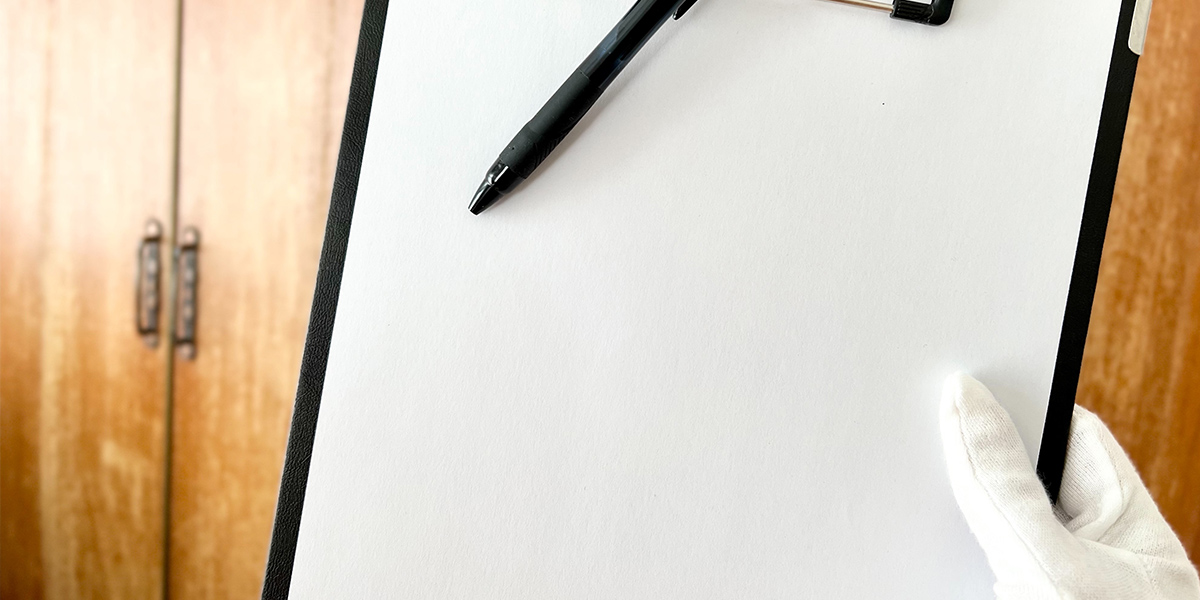Why you should do Meth Testing with us
Meth (P) contamination is caused by smoking or producing methamphetamine in any property or vehicle and poses a serious risk to your investments. We provide standard-compliant, professional and effective testing to help protect properties and occupants. Having completed over 15,000 tests, we have the knowledge to guide you through the process smoothly.
We have provided sampling services for thousands of clients for routine inter-tenancy testing, our reports have been used on numerous occasions at Tenancy Tribunal hearings to prove who is at fault. We have also seen an increase in the number of tenants requesting meth tests. If no pre-tenancy test was completed and meth is found this often results in a claim against the landlord or property manager.
We also undertake testing for those looking to purchase real estate throughout New Zealand and recommend a test is completed as a precaution during your due diligence. Failing to check for the presence of methamphetamine prior to going unconditional can lead to a huge amount of stress, confusion and cost involved with decontamination, often all undertaken without insurance cover.
Customer reviews
We’ve conducted thousands of assessments and take great pride in providing an excellent service, check out what our customers say about us.
“Absolutely professional, well spoken and did what he had to do. It took time but remember I'm in a large home. Great job”
“Guy was very friendly. He ensured I was aware of his every action. Also very happy with his Health and Safety on-site during COVID. Thank you.”
“The guy was lovely, the service quick and unintrusive.”
“Very good. Nice guy and professional. Got the job done.”
“I was just really happy with the contact and flexibility of the consultant"

Field Composite Test
What is Field Composite Test?
In a Field Composite multiple samples are taken at a property, combined into a single test tube on site and sent to the laboratory for analysis. The result you receive is the total contamination (if any) in the property, and provides either the proof needed that a property is habitable, or informs you that further investigation is required to establish the extent of any contamination.
Compliancy must do’s
Who needs to test?
Landlords
Property buyers
Why do you need to?
Landlords: It is best practice to test all rental properties between tenancies. This means you ensure the property is habitable for an incoming tenant and also clearly establish who has caused contamination if it is found.
Property buyers: If a meth test is not conducted as part of due diligence you may get an unwanted surprise. We routinely find meth in pre-purchase testing. Regardless of the cosmetic appearance of a property, meth testing as part of the purchase conditions is highly recommended.
What happens if you don’t?
The financial implications of not meth testing can well outweigh the cost of routine testing. If a tenant is put into a property that is deemed ‘uninhabitable’ due to meth contamination levels, they can be entitled to their rent being reimbursed for the length of time they’ve lived in the house, replacement costs for their belongings and the cost of temporary accommodation.
If you purchase a property with elevated meth levels, you won’t have insurance cover for the cost of cleaning the property, leaving you to foot the bill for decontamination.
Advantages
As the samples are combined in one test tube, analysis costs are kept low so this makes it a very affordable form of testing
Disadvantages
If contamination is found, we need to return to the property to take further samples to determine the extent of the issue.
1-3 bedrooms
$229+GST
(up to 10 samples)
4-6 bedrooms
$299+GST
(11-20 samples)
7+ bedrooms
POA
(21-30 samples)

Lab Composite Test
What is Lab Composite Test?
In a Laboratory Composite test multiple samples are taken but they are all kept separate and sent to the laboratory individually for analysis. The laboratory will take an extraction from each test tube and combine them into a single analysis. The result shows the maximum level of methamphetamine that could be present on a single sample and an average level of contamination across all swabs.
Compliancy must do’s
Why do you need to test?
Landlords: It is best practice to test all rental properties between tenancies, this means you ensure the property is habitable for an incoming tenant and also clearly establish who has caused contamination if it is found.
Property buyers: If a meth test is not conducted as part of due diligence you may get an unwanted surprise. We routinely find meth in pre-purchase testing. Regardless of the cosmetic appearance of a property, meth testing as part of the purchase conditions is highly recommended.
What happens if you don’t?
The financial implications of not meth testing can well outweigh the cost of routine testing. If a tenant is put into a property that is deemed ‘uninhabitable’ due to meth contamination levels, they can be entitled to their rent being reimbursed for the length of time they’ve lived in the house, replacement costs for their belongings and the cost of temporary accommodation.
If you purchase a property with elevated meth levels, you won’t have insurance cover for the cost of cleaning the property, leaving you to foot the bill for decontamination.
Advantages
One sample is taken in every “high use” area in accordance with NZS8510:2017. As the samples are all kept separate, if contamination is found they can be re-analysed individually to ascertain which sampling location holds the contamination.
Note: Re-analysis is an additional cost per test tube
Disadvantages
As samples are taken and kept individually, the sample collection takes longer and stricter cross-contamination practices must be enforced which increases the cost
1-3 bedrooms
$279+GST
(up to 10 samples)
4-6 bedrooms
$359+GST
(11-20 samples)
7+ bedrooms
POA
(21-30 samples)

Detailed Assessment
What is a Detailed Assessment?
A Detailed Assessment is a room-by-room or area-by-area test that analyses each individual sample. This is required when a “Screening Assessment” has exceeded 1.5ug – the maximum acceptable level of methamphetamine set by the New Zealand Standard for Testing & Decontamination of methamphetamine contaminated properties (NZS8510:2017). This analysis is used by decontamination companies to create a scope of work to bring the property back to habitable levels.
Compliancy must do’s
Who needs to test?
Anyone with a screening assessment with a result above 1.5ug/100cm2 is required to do a detailed assessment to meet the NZ standard NZS8510:2017
Why do you need to test?
If a screening assessment has been done and the total contamination is above 1.5ug/100cm2 then the detailed assessment is needed to breakdown that total contamination level into sample-specific results, these results will then determine if decontamination is required.
You also need a detailed assessment after decontamination is done to confirm it has worked.
What happens if you don’t?
You could be either living in yourself, or allowing tenants to live in, a property that is seen to be uninhabitable. This could lead to health implications for the occupants and financial implications via the Tenancy Tribunal if you are a landlord. In some situations it could also lead to the council putting a cleaning order against the LIM.
Advantages
A detailed assessment provides an in depth view of the extent of contamination in a property across multiple building materials. This helps ensure decontamination is targeted and effective
Disadvantages
A detailed assessment requires multiple samples to be taken for each room, this increases the laboratory analysis costs which can make it an expensive test to have done.


Decontamination
What is Decontamination?
When you have a property with meth contamination, the process to clean it can seem daunting. Our experienced team will happily talk you through your requirements and help you navigate the process from cleaning, to retesting and a final clearance certificate.
Compliancy must do’s
Who needs to decontaminate?
When a Detailed Assessment returns a result above 1.5ug/100cm2 on a single sample, the room that sample is taken from needs decontamination to align with the NZ Standard NZS8510:2017. If in your circumstance you are following the guidance of the Gluckman Report, this process is triggered by a single result over 15ug/100cm2.
Why do you need to?
The health implications of living in a house contaminated by meth continue to be studied. The latest was a Flinders University study released by Professor Jackie Wright in 2020.
Legally the reasons to decontaminate include potential repercussions with the Tenancy Tribunal in rental properties, issues with insurance cover and in situations where the property is a workplace, there can be issues with Worksafe as well.
What happens if you don’t?
Depending on the use of your property, there are a number of potential outcomes:
If it’s a rental property then you can be deemed to be renting an uninhabitable property and face Tenancy Tribunal action which can include fines, reimbursement of rent and reimbursement of furniture and belongings costs if the contamination was not caused by the current tenant.
Depending on your insurance policy you may not be covered if you have not tested the property prior to beginning the policy, or if you have not decontaminated based on the NZ Standard guidelines.
In cases where the local council is aware of contamination, they may issue a cleansing order against the property which goes on the property LIM until the required decontamination is undertaken.
Advantages
When completed professionally, decontamination will result in a property that is entirely safe for you or your tenants to occupy
Disadvantages
No-one wants to be faced with a meth contaminated property. It is a tough process to go through and can take a financial and emotional toll.


